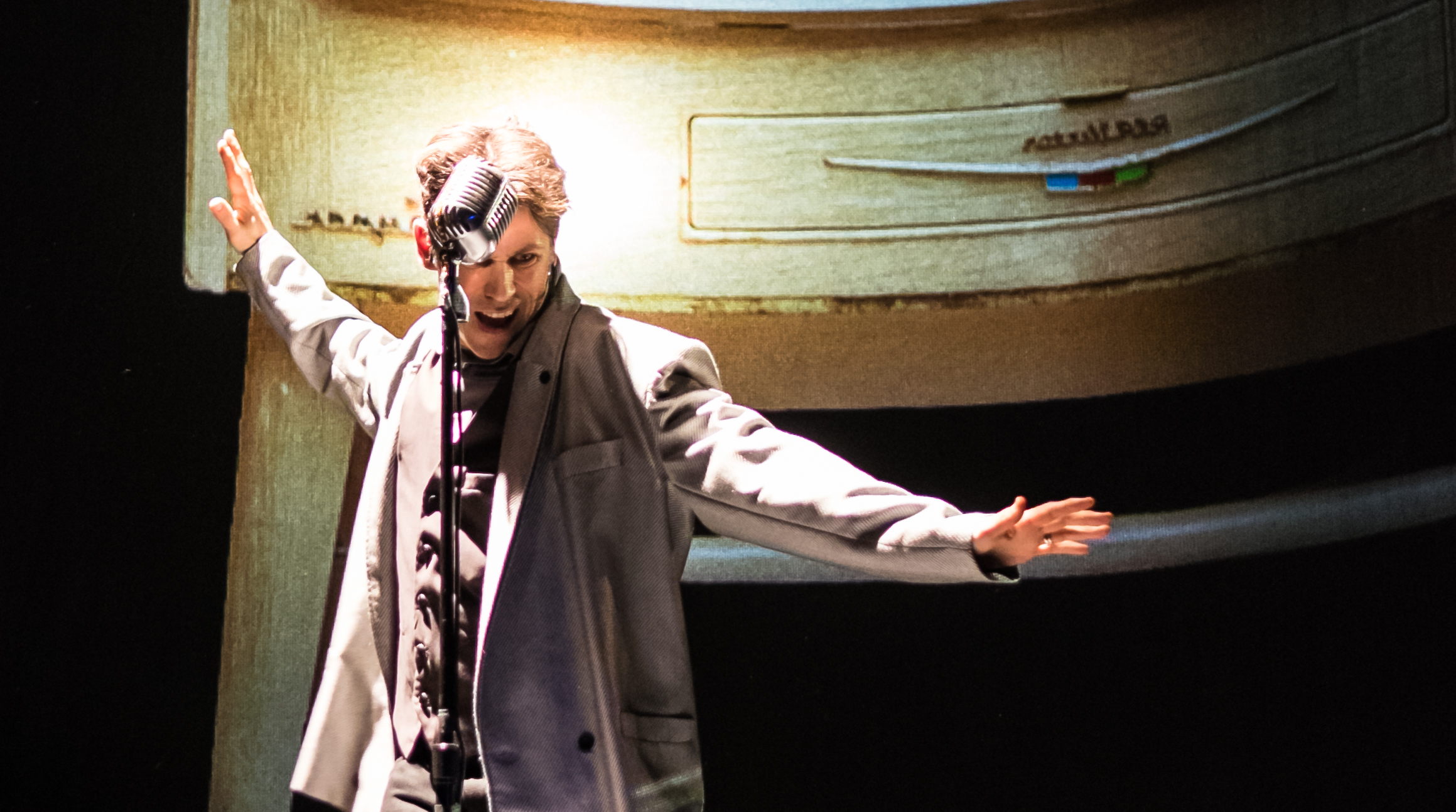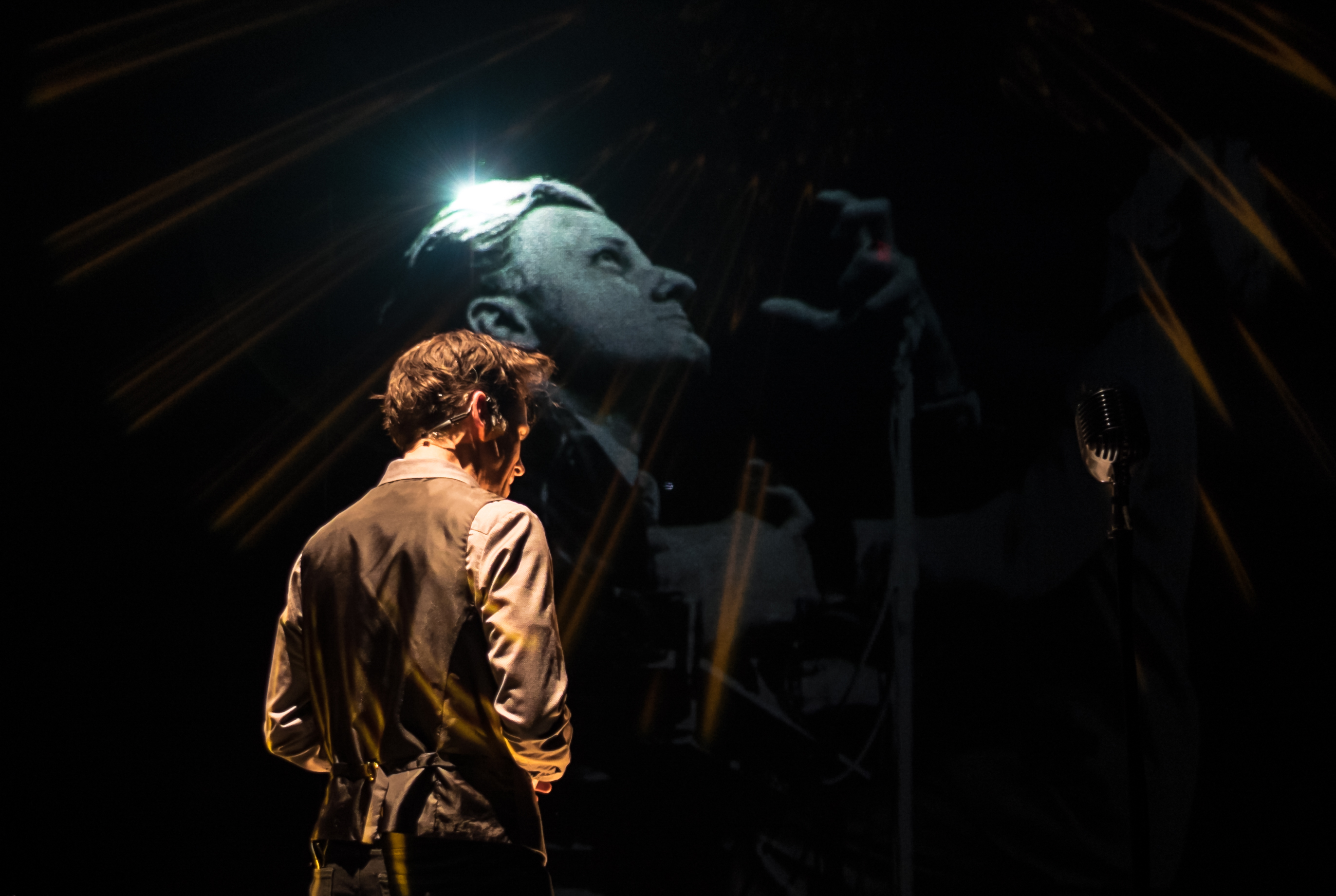BOOM is a visual exploration of the vibrant history and culture of the ‘50s and ‘60s
It’s 1945: the U.S. drops two atomic bombs on Japan, marking the end of World War II. In 1969: the Americans launch Apollo 11, the first spaceflight to land humans on the moon. Those two thundering historical events are the framing of Miller’s one-man show, BOOM. Miller played his 200th performance last Wednesday as part of a 16-month Canadian tour introducing the storytelling of 25 years of history from today’s perspective.

If anything, BOOM is the kind of show that can’t easily fit into a box. It’s not really a play or a documentary, yet it’s a little bit of both. The stories of three baby boomers call the tune in this unique visual exploration of the vibrant history and culture of the ‘50s and ‘60s. Pop culture music, crooner singing, imitation of legends and shadow plays—Toronto writer, director and performer Rick Miller gives it his all.

The story emerges from three characters’ personal memories of what it was like to be part of the baby boomer generation. The first two are Maddie and Rudi, Miller’s parents, who conceived him on the exact same day Apollo 11 left Earth, an event that marks the end of the play. The third character is Laurence Davis, an African American musician who fled the U.S. draft and immigrated to Canada, and who was once romantically involved with Maddie. By painting these truthful stories—with the exception that Maddie’s story was merged with another woman’s—into the bigger post-war political picture, Miller smartly finds the universal aspects of these personal stories. The performer’s use of multimedia transforms the circular stage into a gigantic vinyl record where Lyndon Johnson’s nuclear “Daisy” ad stands alongside The Beatles’ crowd of groupies. Alone on stage, Miller is all at once changing costumes, putting on wigs and turning his back on the audience to face a camera that is projected as a big T.V. screen on the front stage multimedia platform.
Creativity has become second nature to Miller, whose degrees in architecture influences his will to see how small histories connect to all of history. “I decided that creativity needs constraints of some kind. I didn’t decide to do a hundred voices and a hundred minutes, that’s sort of how it shaped out, that four minutes per year could get some information across, but we could still cover the whole thing in one show,” said Miller. Astonishingly, Winston Churchill, president John F. Kennedy, Martin Luther King, Janis Joplin and the lead singer of the Rolling Stones are only a sample of the one hundred famous figures impersonated by Rick Miller. In order for the audience to not feel lost when so many characters are played by a single actor, Miller’s technique in BOOM consists of exaggerating the details.

Previously the host of the T.V. show Just for Laughs, Miller is well known for MacHomer, his recreation of Shakespeare’s Macbeth, where the playwright used voices from The Simpsons. Miller is also known for his original performance of Bohemian Rhapsody: “Twenty five of the most annoying voices in the music industry.”
By putting Kennedy’s hopeful first years into perspective by comparing them with Obama’s election, and equating Martin Luther King’s fight for civil rights to the Indigenous cause in Canada, Miller adds an interesting element to the informative aspect of the play. “Zooming in, zooming out” comes as Miller’s philosophy as explained by the writer in an interview. Even though BOOM accurately depicts the period of consumerism and rebellion, one could wonder whether it is Miller that serves history, or the other way around. The actor’s incarnation of that era suits the comical tone of the play while slightly neglecting the emotional part. Behind BOOM lies a primarily educational purpose. By addressing his show to a diversified audience, Miller expects people to learn from the past. “I want people to feel connected to not only history but to their own personal history. We try to create different experiences so that audiences feel it was worth it leaving Netflix!” said the Dora and Gemini award-winning writer. After the result of a three years project, the storyteller stays on stage to open the discussion and carry on with his collection of stories.
“It’s almost like I was a curator more than a writer, and my exhibit is this time capsule,” said Miller.
Copa de Oro presents BOOM at Segal Centre for Performing Arts from March 20 until April 10. Tickets are $32 for students and start at $50 for adults.



